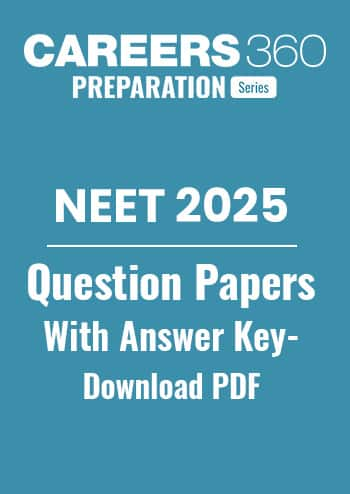The Gas Laws MCQ - Practice Questions with Answers
Quick Facts
-
Gas laws(I) is considered one of the most asked concept.
-
21 Questions around this concept.
Solve by difficulty
Directions: A word is represented by only one set of numbers as given in any one of the alternatives. The sets of numbers given in the alternatives are represented by two classes of alphabets as in two matrices, given below. The columns and rows of Matrix (I) are numbered from 0 to 4 and that of Matrix (II) are numbered from 5 to 9. A letter from these matrices can be represented first by its row and next by its column, e.g. 'A' can be represented by 01,14, etc and 'M' can be represented by 56, 68, etc. Similarly, you have to identify the set for the word 'EAGLE'.
MATRIX - I
| 0 | 1 | 2 | 3 | 4 | |
| 0 | P | A | G | R | Z |
| 1 | G | R | Z | P | A |
| 2 | Z | P | A | G | R |
| 3 | A | G | R | Z | P |
| 4 | R | Z | P | A | G |
MATRIX - II
| 5 | 6 | 7 | 8 | 9 | |
| 5 | E | M | L | N | O |
| 6 | L | E | O | M | N |
| 7 | O | N | E | L | M |
| 8 | N | O | M | E | L |
| 9 | M | L | N | O | E |
Directions: Some numbers are given in different Rows/Columns. Which one of the given Rows/Columns is connected/related to each other in some way?
Concepts Covered - 3
BOYLE'S LAW
Boyle’s law: It states that, for a given mass of an ideal gas at constant temperature, the volume of a gas is inversely proportional to its pressure.
$$
\begin{aligned}
V & \propto \frac{1}{P} \\
\text { or, } \quad P \cdot V & =\text { constant } \\
\Rightarrow P_1 V_1 & =P_2 V_2
\end{aligned}
$$
We can also write the above equation as,
$$
\begin{aligned}
& P V=P\left(\frac{m}{\rho}\right)=\text { constant } \\
& \Rightarrow \quad \frac{P}{\rho}=\text { constant or } \frac{P_1}{\rho_1}=\frac{P_2}{\rho_2}
\end{aligned}
$$
We can represent Boyle's law through the various graphs, which are shown as -

CHARLE'S LAW -
Charle's law: It states that, if the pressure remains constant, the volume of the given mass of a gas is directly proportional to its absolute temperature.
From the above statement we can conclude the following equations -
$$
\begin{aligned}
\boldsymbol{V} & \propto \boldsymbol{T} \\
\frac{V}{T} & =\text { Constant } \\
\text { So, } \frac{V_1}{T_1} & =\frac{V_2}{T_2}
\end{aligned}
$$
This equation can also be written in terms of density and temperature as -
$$
\begin{aligned}
& \frac{V}{T}=\frac{m}{\rho T}=\text { constant }\left(\text { As volume } V=\frac{m}{\rho}\right) \\
& \text { or, } \quad \rho T=\text { constant } \Rightarrow \rho_1 \mathbf{T}_1=\rho_2 \mathbf{T}_2
\end{aligned}
$$
We can represent the Charle's law through the various graph, which is shown as -

Gay-Lussac’s law -
Gay-Lussac’s law or pressure law: If the volume remains constant, then the pressure of a given mass of a gas is directly proportional to its absolute temperature.
So, We can conclude the above statement in the following equation -
$P \propto T$ or $\frac{P}{T}=$ constant $\Rightarrow \frac{P_1}{T_1}=\frac{P_2}{T_2}$
The graphical representation of Gay-Lussac's law is -

AVAGADRO'S LAW -
Avogadro’s law: Equal volume of all the gases under similar conditions of temperature and pressure contain equal number of molecules. It implies that -
$N_1=N_2$
N = Number of molecules in a particular gas.
GRAHAM’S LAW OF DIFFUSION
Graham’s law of diffusion: It states that when any two gases at the same pressure and temperature are allowed to diffuse into each other, then the rate of diffusion of each gas is inversely proportional to the square root of the density of the gas.
So we can say that,
$$
r \propto \frac{1}{\sqrt{\rho}} \propto \frac{1}{\sqrt{M}}
$$
Where, $r=$ rate of diffusion of gas
$$
\begin{aligned}
& \rho=\text { Density of the gas } \\
& \mathrm{M}=\text { Molecular weight of the gas }
\end{aligned}
$$
Now, from the above equation, we can write,
$$
\frac{r_1}{r_2}=\sqrt{\frac{\rho_2}{\rho_1}}=\sqrt{\frac{M_2}{M_1}}
$$
DALTON'S LAW OF PARTIAL PRESSURE -
Dalton’s law of partial pressure: It states that the total pressure exerted by a mixture of non-reacting gases occupying a vessel is equal to the sum of the individual pressures that each gases exert if it alone occupies the same volume at a given temperature.
Now, let us have a mixture of 'n' gases, so from the above statement we can conclude that -
For $n$ gases $P=P_1+P_2+P_3+\ldots . . P_n$
Here, P = Pressure exerted by the mixture of gases
P1, P2. . . . . . Pn = Partial pressure of the component gases.
Study it with Videos
"Stay in the loop. Receive exam news, study resources, and expert advice!"
















